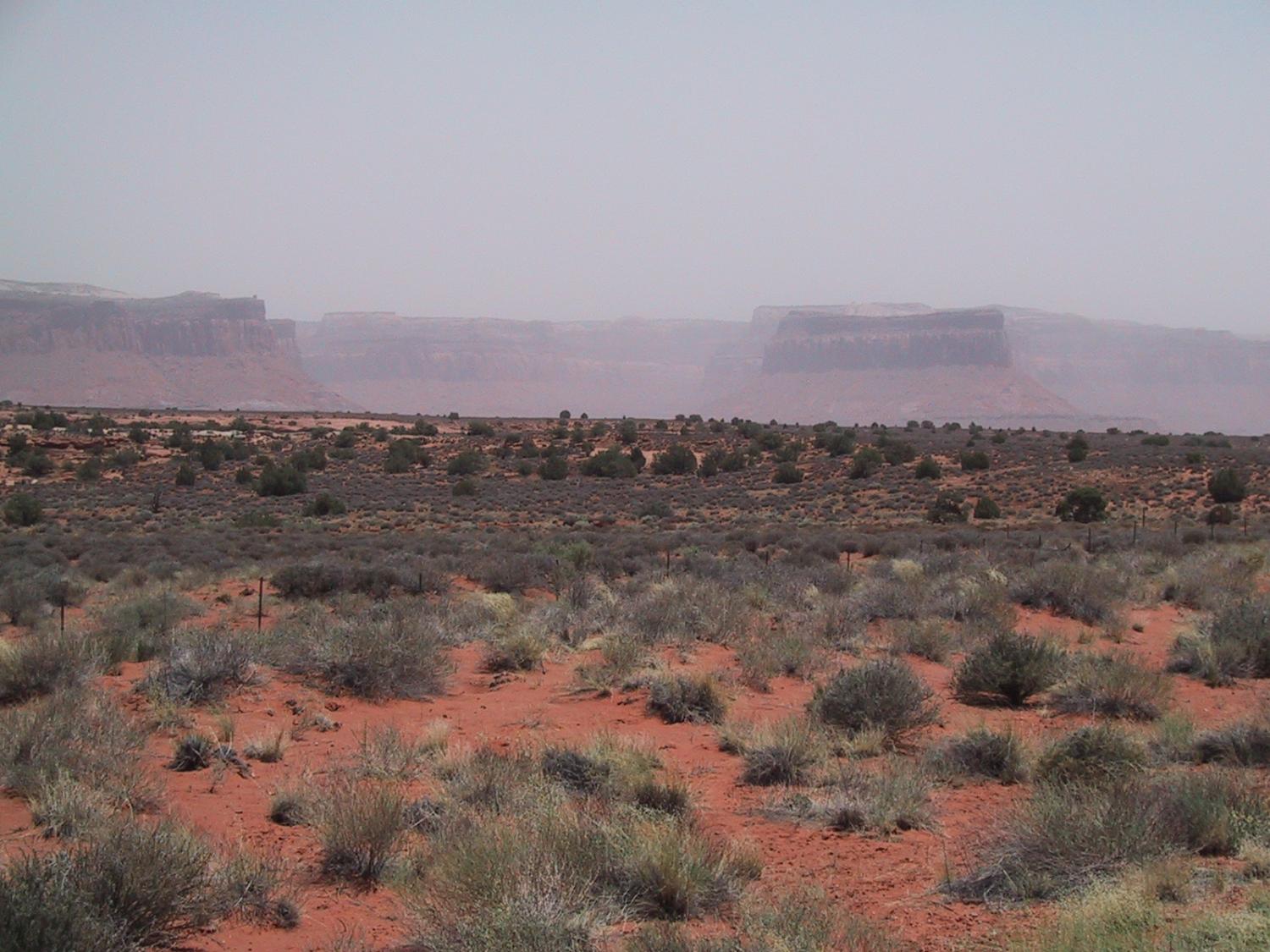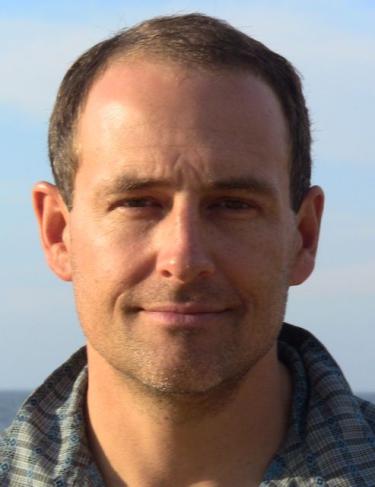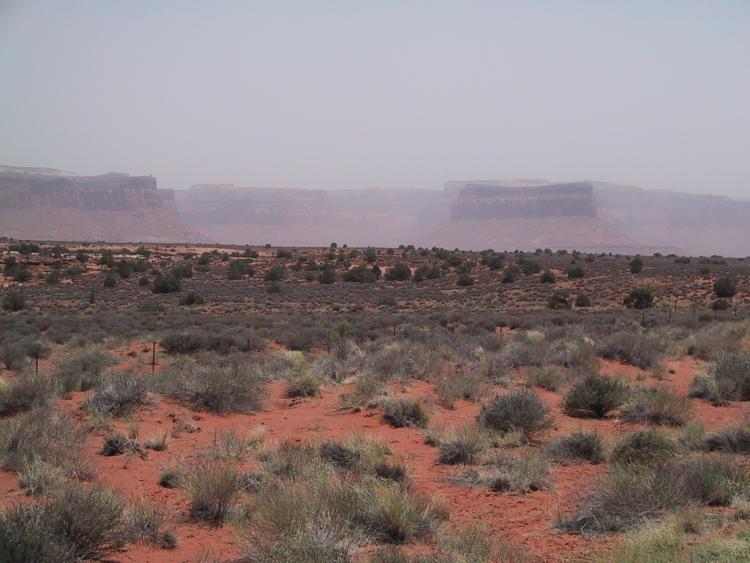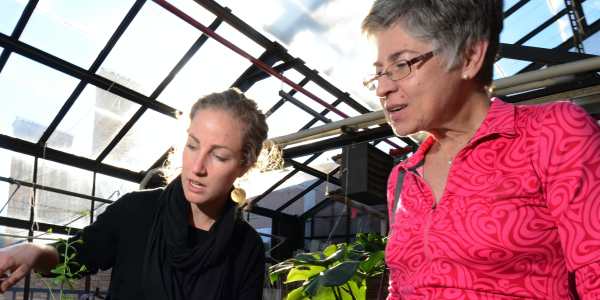
While U.S. focuses on tiny particulates, researcher probes larger, unregulated dust
Some of the smallest airborne particulate matter poses large risks to human health, but bigger blobs aren’t necessarily benign. That’s one conclusion of Jason Neff, associate professor of geological sciences and environmental studies at the University of Colorado Boulder.
Neff researches dust and other airborne particulates larger than those regulated by the U.S. Environmental Protection Agency. His research has found that the American West has become 500 percent dustier in the past two centuries partly because of human activity such as livestock grazing.
 And while the larger particles are no longer regulated by the EPA, Neff notes evidence suggesting that particles whose diameter is between 10 and 100 microns—the latter being the diameter of a human hair—could harm human health.
And while the larger particles are no longer regulated by the EPA, Neff notes evidence suggesting that particles whose diameter is between 10 and 100 microns—the latter being the diameter of a human hair—could harm human health.
Airborne particulate matter (or PM) affects health in two primary ways: as an irritant or a means of carrying contaminants. Larger particles tend to get trapped in the upper respiratory tract. Smaller particles can go deep into the lungs, lodging there and causing inflammation that hinders breathing.
Airborne particles, many on the order of 2.5 microns and smaller, kill some 800,000 people a year globally.
But some comparatively larger particles have apparent respiratory effects.
In late October, Neff summarized his research at The Academy for Lifelong Learning in southeast Denver as part of its “Science at the Cutting Edge” series.
Neff noted the generally held view that larger particles are not especially harmful. But, “I’m not a big fan of conventional wisdom. That’s why it’s great to be a scientist. It’s a self-correcting enterprise.”
When he’s stuck in a Mesa Verde dust storm, “I feel something,” Neff said, acknowledging, “That’s anecdotal and unscientific.”
But the question is whether science has a definitive answer about larger particles. “To my mind, I don’t see a smoking gun” showing that large particles are harmless.
Potentially hazardous metals such as arsenic, cadmium and chromium can “hitchhike” on larger particles. So can viruses or other pathogens. Some of these dust particles “are teaming with life.”
Then there’s pollen. For those with allergies, “When you inhale a lot of it, your body responds. So something is happening in your upper respiratory tract to trigger a response,” Neff observed.
“So let’s just throw out this notion that large particles are completely irrelevant, because here’s evidence to suggest that they’re not, that there’s something going on.”
Shortly after President Nixon signed the Clean Air Act into law in 1970, the Environmental Protection Agency regulated “Total Suspended Particulates” in the atmosphere. In 1987, the agency refocused its regulatory muscle on airborne particles 10 microns or smaller. A decade later, the agency issued regulations for particulates smaller than 2.5 microns and 10 microns.
These efforts have borne fruit. In the last two decades, the national average levels of PM10 pollution fell by 38 percent. In the last decade, the national average levels of PM2.5 pollution decreased by 27 percent, the EPA reports.
But in the last two decades, there has been a sharp increase in the number of large dust storms in the American West. That might indicate increased levels of particulate matter larger than 10 microns.
The U.S. government does not monitor those larger particles. However, Neff noted, studies from Asia seem to suggest that these larger particles have a statistically significant effect on human health. One study indicated that higher levels of larger particles in four Chinese cities were correlated with higher levels of asthma, bronchitis, hospitalization and persistent phlegm.
Of course, regulations have economic impacts, “And I’m the last person to stand up here and say that we should do X, Y or Z,” he said. “But I do think that we need to be very clear about what it is that we’re regulating and why.”
“I may be tilting at windmills. It may not be that important. But we need to monitor it.”
In urban areas, the current regulatory requirements might be appropriate, but for those living in Western Colorado, additional standards might also be appropriate, he said.
The sharp rise in airborne dust in the last four decades could be related to human activity, he said. About 40 percent of Earth’s surface is arid or semi-arid. Those areas tend to be where many people live. With limited vegetation and increasing populations of livestock, more land is being transformed into desert, Neff said.

Airborne particles, like what can be seen here in the Canyonlands National Park, can be transported from state to state and may pose risks to human health. Photo by Jason Neff.
The sediment in those high lakes indicates the rate of dust deposition during the past 5,000 years or so. It also underscores one reason to monitor larger dust particles.
Neff said there are many questions and no definitive answer on the risk of larger particles. That is why he calls for more research.
Unlike the skies during a desert wind storm, he said, one thing is clear: “What happens in Utah doesn’t stay in Utah.”
Bennie Bub, president of the board of the Academy of Lifelong Learning, said presentations like Neff’s vivify the natural sciences.
“Study of science is not the contemplation of petrified material,” Bub said. “Science continues to rapidly change, reflecting developments within societies in which it is rooted.”
Bub said the Science at the Cutting Edge has drawn “unanimous acclaim of a large audience.” Further, many called it the best science course they’d ever attended, he said.
Neff’s talk was one of eight in a series of presentations by CU-Boulder faculty members whose expertise included climate change in the Arctic, in vitro fertilization, the age of the Grand Canyon, the impacts of wind power, exploring the universe from the Moon, why understanding evolution is difficult, and short-term climate “forcers.” The Colorado Academy of Lifelong Learning’s next “Science at the Cutting Edge Series” is scheduled to begin in February. For more, see http://www.academyll.org/.



